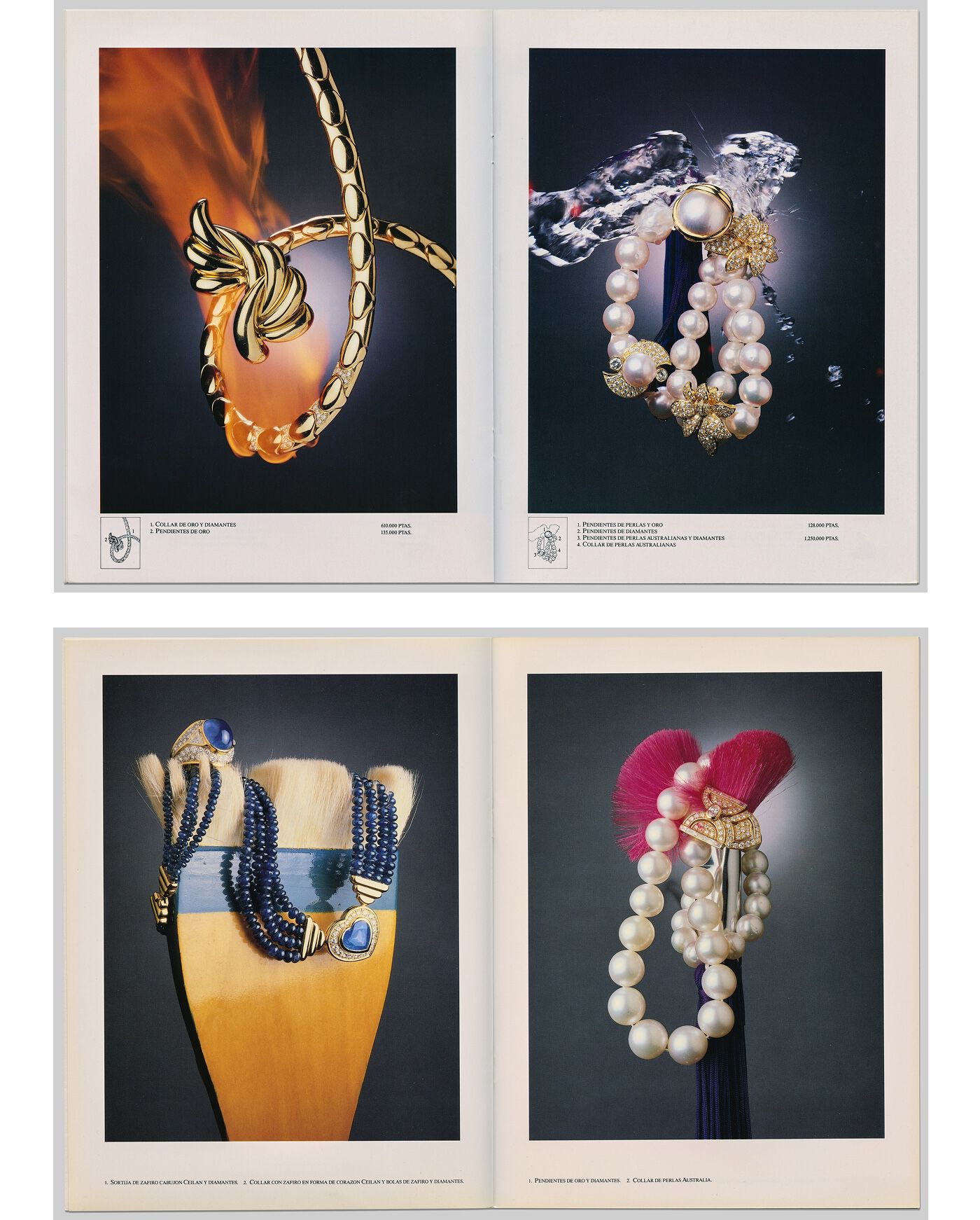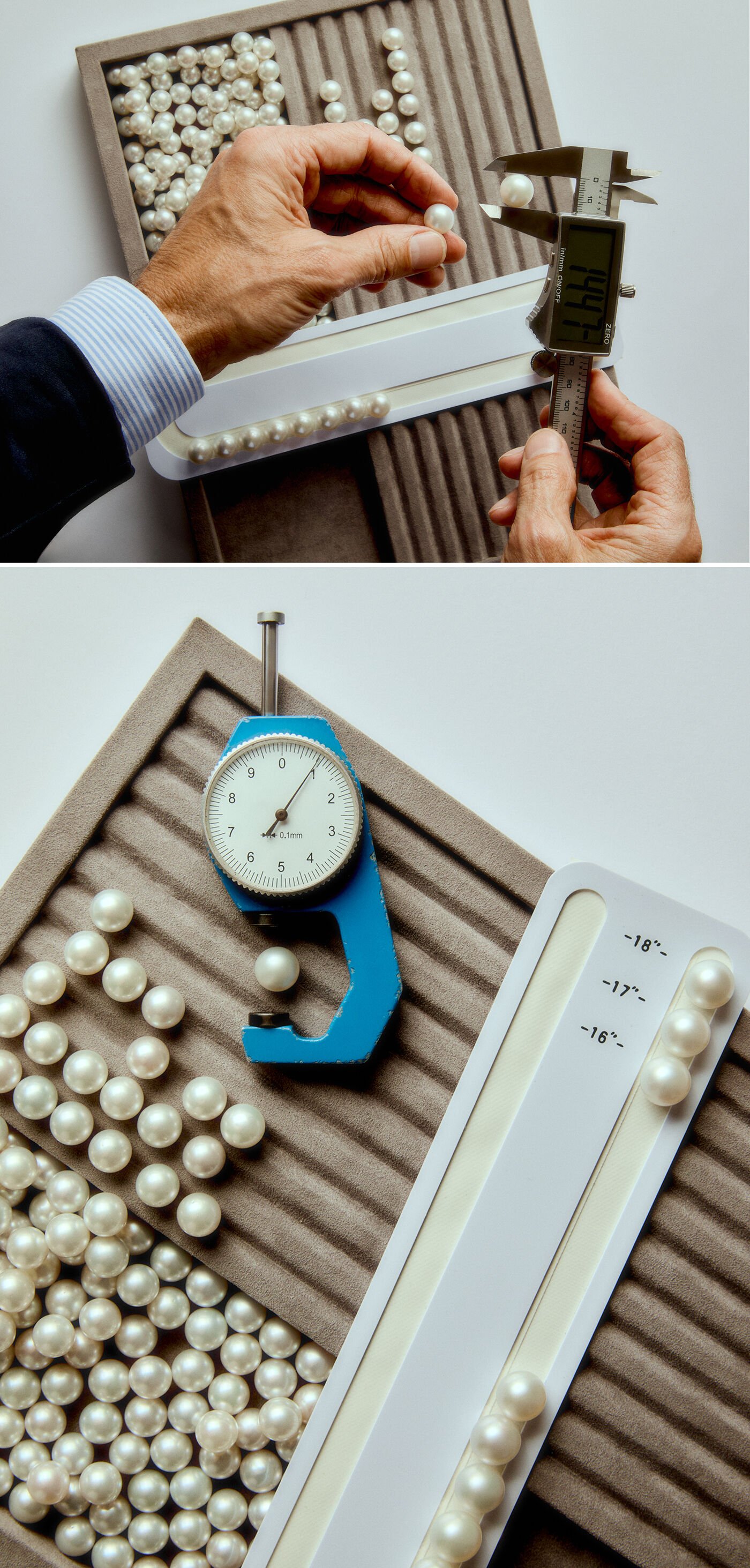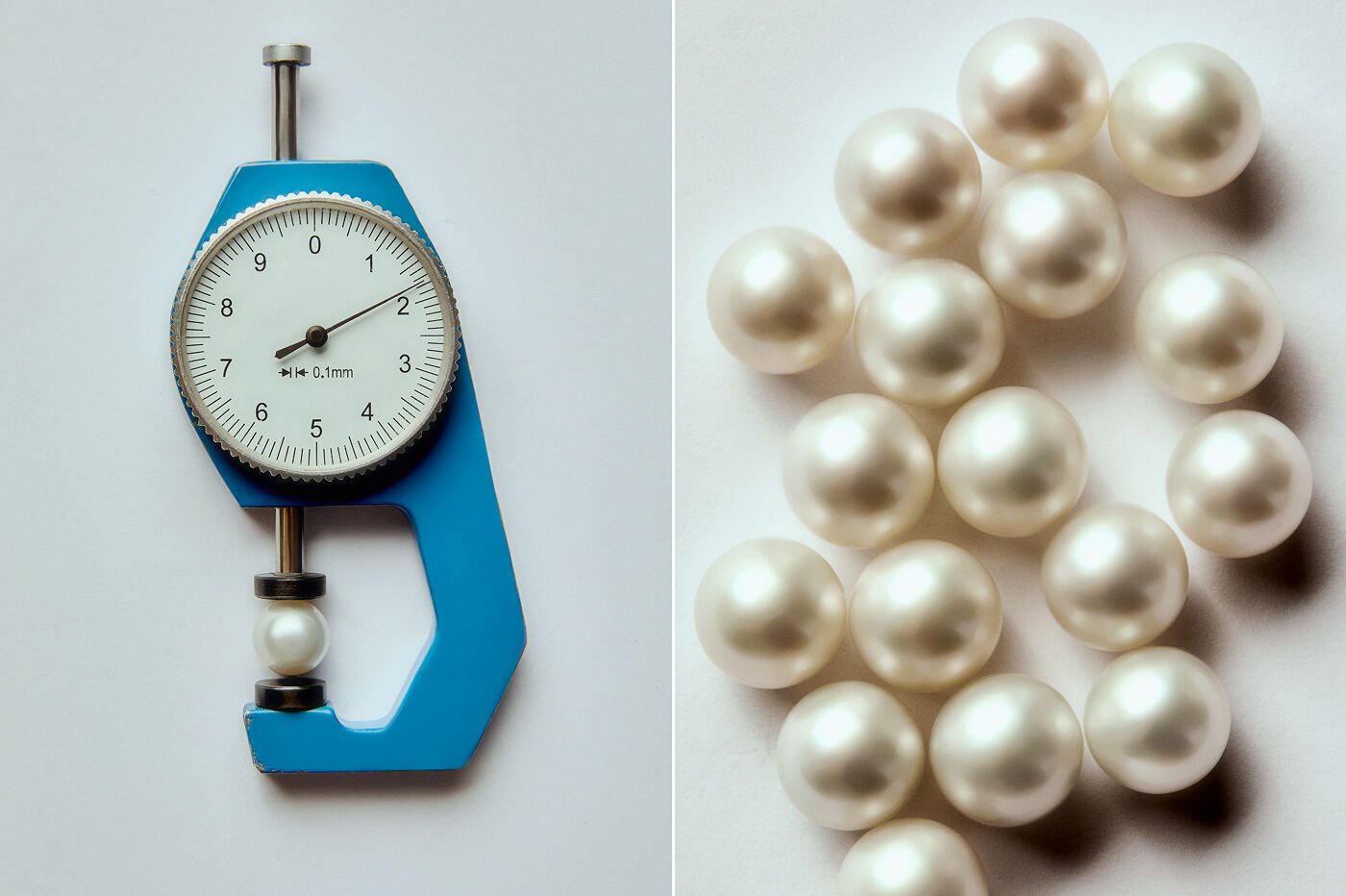The importance of the pearl
in Suarez
The pearl is a particularly recognizable element that has been deeply present in the history of Suarez. An organic gem that we have managed to exalt through unique designs that transcend as timeless symbols of purity, love, and protection.
Since 1943, the year Suarez was founded, the family has worked with pearls as an element in their creations, but it was not until the 1980s and 1990s that demand grew exponentially, leading to the creation of more voluminous designs with this jewel of nature as the main feature.
From the 2000s until a few years ago, the trend for pearls changed, returning to the use of smaller specimens in simpler jewelry. Today, the trend of the 1980s and 1990s is making a comeback; large volumes, stacking, and combinations have been revived as a renewed statement of contemporary luxury.
Suarez catalog from the late 1980s.
The origin of the pearl
Suarez
As with precious stones, the Suárez family personally travels to international pearl markets to select all the specimens and ensure they meet the house's demanding quality standards.
For decades, Suárez has been one of the few jewelry houses with direct access to exclusive auctions available only to pearl professionals and specialists. Thanks to the professionalism that precedes the Suárez family and experts, relationships have been forged with the most select suppliers in the market, ensuring we offer our customers the highest quality specimens possible.
Thanks to this meticulous search and subsequent selection process, we ensure the highest quality in each and every one of our jewels, which has directly led to our becoming one of the leading Spanish jewelry houses in pearl expertise.
An artisanal manufacturing
process
Once we've selected the batches of the highest-quality pearls, it's time to bring them to our workshop in Spain to examine them again one by one and classify them according to size, color, and type.
Only the trained and expert eye of the family and our master jewelers can differentiate and classify each piece of jewelry to group them and include them in the design required.
The pearls are graded from half a millimeter to half a millimeter and separated one by one. We also use a sieve to create progressive necklace gradients, which also makes it easier to create similar pairs for earrings.
The process of creating our necklaces is different. First, the value of the necklace is considered, then the pearls are placed on adhesive strips and strung together to see what is available in each size and thus determine how many similar necklaces can be made with the same characteristics.
Then they are marked and drilled one by one with special tungsten drill bits, and after choosing where the normally hidden clasp will be located, it's time to string them together with a silk thread, which is threaded by hand over each pearl and knotted without gaps to contain them in case of breakage and at the same time protect them from rubbing against each other.
The most desired pearls
At Suarez, we only work with the finest examples of these natural treasures, designed to endure over time and be preserved from generation to generation.
We mostly use specific types of pearls. First and foremost, there is the Akoya pearl, highly prized for its perfectly spherical shape and unmistakable pearly luster. It comes in sizes ranging from 2 mm to 12 mm.
Also present in our imagination are the majestic Australian and Golden pearls, cultivated in the warm waters of the Pacific. These stand out for their generous size, which can exceed 15 mm, and for their hues that range from the purest white to the most intense gold, reflecting incomparable sophistication.
The Tahitian pearl, in this case, is full of enigmatic depth thanks to its characteristic color range, which encompasses silvery grays to deep blacks with green and blue hues.
Regardless of their origin, the delicate morphology and structure of pearls makes them very delicate elements that resist friction with other materials, but at the same time, they are highly resistant to impacts.








